Learn Something New About Autism
Check out the information below to learn something new about autism and gain an insight into what life is like for people with autism (information supplied by The National Autistic Society).
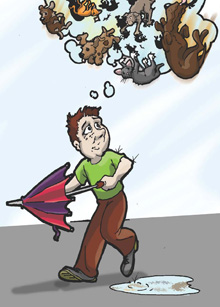
Literal interpretation
Imagine if you didn't know how to read the subtleties of knowledge or tone of voice. You'd quickly find it impossibleto understand people or form meaningful relationships. But that's how many people with autism experience the world every day. When one man with autism heard it was "raining cats and dogs" he worried about how the animal rescue centres would cope. Just think how you'd cope at work or in social situations if you don't know the unwritten rules. You'd be trapped, confused - and friends would be in short supply.
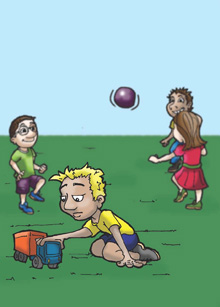
Social interaction
42% of children with autism say they have no friends, compared to 1% of other children. They have difficulty making connections because they don't understand the rules of social interaction that other children take for granted. Some are unable to speak at all. Often, this leads to bullying, isolation and mental health problems.
Children with autism grow up to be adults with autism - what kind of future do they face?
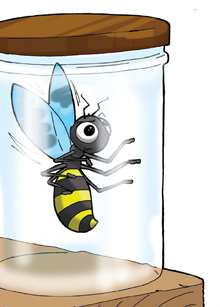
Social isolation
Social isolation can be a devestating consequence of autism, leading to depression and other mental health problems. It also places enormous strain on families and carers.
One person with autism told us: "I'm like a wasp in a jar - I see and hear people around me but when I try to get into their worls I just keep hitting the glass." We know that over 70% of children with autism experience mental health problems, compared to just 10% of other children.
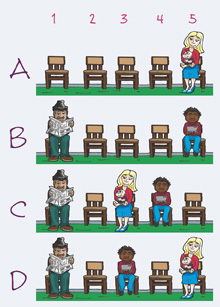
Understanding social rules
Ever had someone sit right next to you in an otherwise empty waiting room? Most people would feel that there personal space had been violated - how would you react to taht person?
People with autism have difficulty understanding social rules. They might not know how close to stand to somebody or where to sit on a train. This inability to follow social norms doesn't just lead to social isolation - it can sometimes put the person with autism in danger of abuse or exploitation.
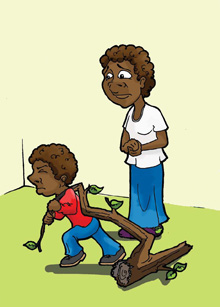
Mental health
For many people with autism, anxiety can be a heavy burden. In fact more than 70% of children with autism also experience mental health problems. A boy with with autism at one of our schools always carried a large stick wherever he went as a way of controlling his stress. This was intimdating for the public and dangerous for him. Our teachers worked with him and over time, he was able to reduce his stick to the size of a matchstick. Now, the boy is safer, more independent and knows how to manage his own anxiety.
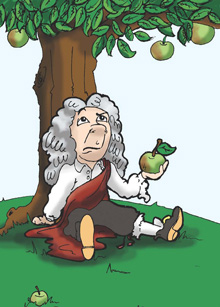
Obsessions
Sir Isaac Newtonis believed to have had autism. He was so obsessed by his work that he didn't eat or sleep, was socially awkward and had very few friends. He always gave his scheduled lectures, even if no0one turned up.
Obsessions are common in people with autism - they can be a positive thing, but if they make you behave inappropriately, forget to eat or be unable to talkabout anything else, htey can lead to social isolation, health problems or trouble with the law.
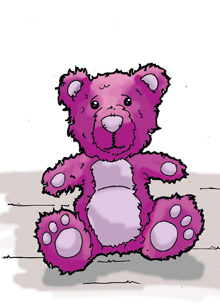
Sensory problems
Imagine if you cuddled a teddybear and, instead of feeling soft, it was as sharp as needles? Or you turned on a light and found its buzz unbearably loud and painful? You'd probably be driven to extreme anxiety.Everyday life is like this for many people with autism - they can experience over- or under- sensitivity to sight, sound, smell and touch. But through sensory therapy and modifications to the environment, their lives can be made more bearable.

Processing information
How long did it take you to spot the differences between the two pictures? For people with autism, it can take just as long to process day-to-day information, like the number on the front of a bus, or a question asked at a job interview.Imagine how other people would behave towards you if you couldn't make instant decisions or give an immediate reply to a seemingly simple question?
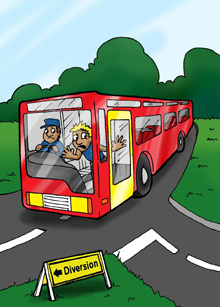
Routines
Some people with autism enjoy and rely on routines to help make sense of their daily life and the world around them. When things change - perhaps the bus they always catch has been diverted, or the shelves in their local supermarket have been rearranged - this can lead to serious panic attacks.
Think how often things change around you. For a person with autism, even the smallest changes can be extremely distressing and confusing.
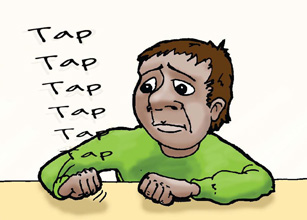
Repetitive behaviour
Some people with autism rely on repetitive movements as a way of dealing with an over- or under0developed sense of touch. They may simply tap a table top, flick a rubber band or twirl a piece of string, or they may flap their arms, rock, spin or bang their head against a wall.
This can lead to physical harm, but even if the behaviour isn't dangerous it can still make it impossible for the person with autism to lead an independent life.
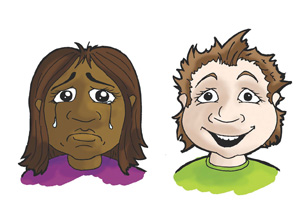
Non-verbal language
How do you tell if someone's happy or sad? For many people with autism, it's impossible. Just because they see someone smiling or crying, it doesn't mean they can tellhow that person is feeling.
Imagine not being able to read facial expressions. How would you know how to act around people? That's why so many people with autism struggle socially - 42% of children with autism say they have no friends.
The National Autistic Society: a lifelong friend

Back in 1962, the National Autistic Society started as a small group of friends who were frustrated at the lack of understanding and help available for children.
Now we're the UK's leading autism charity, providing vital services and support for the 1 in 100 people with autism in the UK, and their families and carers. We're there at every stage, for parents who need advice and support for their children or adults with autism who want help to lead the life they choose.
We want to transform understanding of autism, and make sure everyoneliving with autism gets the support they need.
We spend every penny wisely - 97p in every £1 goes directly to support people with autism and their families.
Contact us
Autism helpline: 0808 800 4104 (Monday - Friday, 10am - 4pm)
Supporter care: 0808 800 1050
A charity registered in England and Wales (269425) and in Scotland (SC039427)



